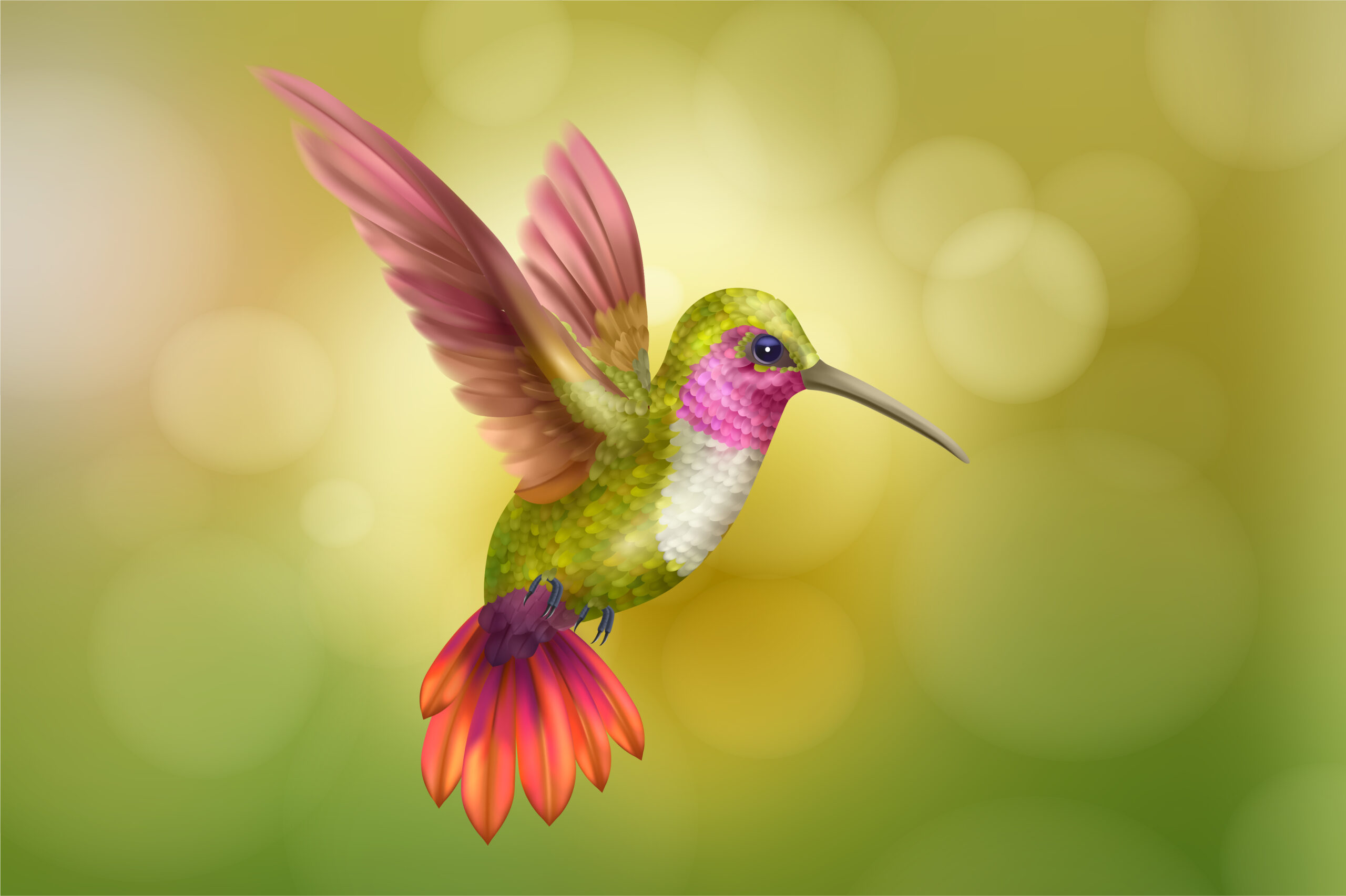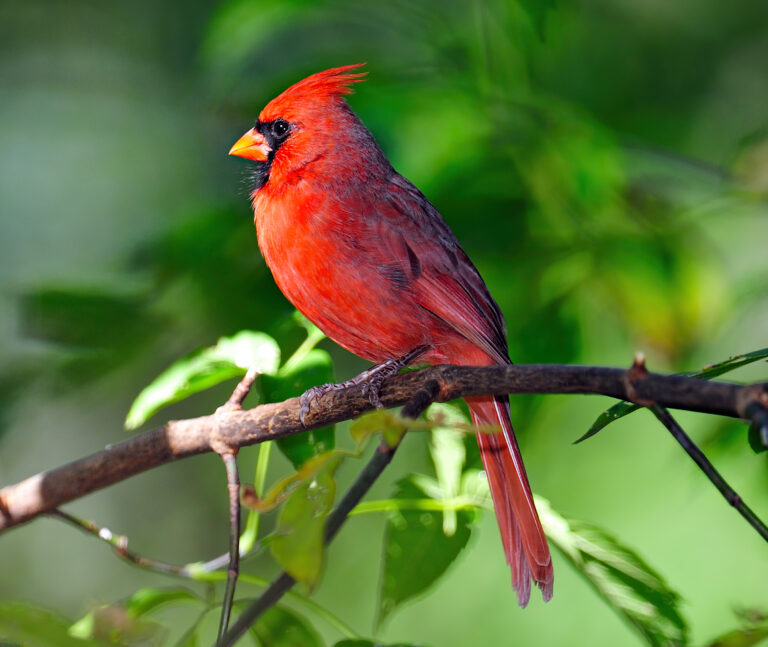What Is the Special Ability of a Hummingbird?
The first time I saw a hummingbird in the wild, I was standing on my back porch in early summer.
I heard this strange buzzing sound near the flowers, and then I spotted it.
A tiny bird, no bigger than my thumb, hovered in place with wings moving so fast they looked invisible.
I honestly thought it was some kind of insect until I looked closer. That moment stayed with me.
Since then, I have made it a habit to observe hummingbirds every season.
They show up around late spring here in the United States, especially in warmer regions.
What amazes me most is not just how beautiful they look, but what they can do.
Hummingbirds are nothing like other birds.
They have flight skills that seem impossible, energy levels that defy logic, and survival instincts that rival much larger animals.
In this article, I want to walk you through what makes hummingbirds so special.
I will break down their most famous ability, which is hovering in place, and also explore their incredible memory, color vision, flying style, and more.
These are not just fun facts. These traits help them survive, migrate across massive distances, and find food in ways no other bird can.
If you are a bird lover, gardener, or just someone curious about how nature works, this is for you.
Stick with me, and I’ll show you why hummingbirds are one of the most fascinating species in North America. And if you have ever spotted one in your own yard, let me know. I’d love to hear about it.
What Makes Hummingbirds So Special?
The more time I spend watching hummingbirds, the more I realize they are nothing like the average backyard bird. You do not just notice them you remember them.
Their behavior, their movement, even the way they interact with flowers feels different. There is something almost unreal about them.
What sets them apart begins with size, but it goes much deeper. These birds are incredibly small. Most species are only three to five inches long.
But packed inside that tiny frame is one of the most advanced flight systems in the bird world.
They burn energy faster than any other bird, yet they move with a kind of precision you usually only see in engineered machines.
One thing I noticed early on is how alert and focused they are. Hummingbirds do not just flutter around. They remember where flowers are.
They recognize which ones they have already visited. They even defend feeding spots against other birds with surprising intensity.
I have watched one hummingbird chase off a sparrow three times its size just to protect a single flower.
That kind of behavior is one reason why scientists and birdwatchers are drawn to hummingbirds. Their flight skills, memory, vision, and migration patterns have been studied for decades.
They push the limits of what we think birds can do. And from a birding perspective, spotting one in action feels like finding a rare, living jewel.
The Hummingbird’s Most Famous Ability: Hovering in Place
If you ask anyone what makes a hummingbird special, the first answer is usually the same. “It can hover.” And that is true.
Hummingbirds can stay completely still in the air, just like a helicopter. I have stood just feet away from one while it floated near a feeder, wings buzzing so fast I could barely see them.
It did not flap like a sparrow or glide like a hawk. It hovered precise, effortless, and focused.
Here is what actually happens. A hummingbird’s wings beat between 50 and 80 times per second. Yes, per second. That rapid wing movement allows them to create lift during both the forward and backward stroke.
Most birds only create lift in one direction. That is why other birds cannot hover. They have to flap down, glide, or flap again to stay in motion. Hummingbirds break that rule.
This unique flight pattern is powered by incredibly strong chest muscles. These muscles make up about one-third of their total body weight.
Combine that with a lightweight frame and fast reflexes, and you get a bird that can move forward, backward, sideways, or even straight up like a drone.
Very few birds in the world can hover. The ones that can usually do it for just a few seconds.
Hummingbirds, on the other hand, can hover as long as they want—often while feeding from deep flowers or dodging other birds in midair. It is one of the rarest and most impressive flight styles in the animal kingdom.
I remember watching a Ruby-throated Hummingbird do this for over 30 seconds, just outside my kitchen window.
It barely moved its body, but its wings were a blur. That one moment changed how I looked at birds forever.
Other Special Abilities of Hummingbirds
Every time I think I’ve learned everything there is to know about hummingbirds, they surprise me again.
Beyond their hovering flight, these birds have a whole set of extraordinary skills that feel more like superpowers than biological traits.
These abilities are not just fascinating they help hummingbirds survive in a way that most birds simply cannot.
Flying in All Directions
This is one of the first things I noticed after seeing a hummingbird in action. They do not just fly forward like most birds.
They can move backward, side to side, up, down, and even flip upside down if needed. I have seen one dart from flower to flower in ways that seem impossible to track. It feels more like watching a remote-controlled drone than a wild bird.
This freedom of movement is made possible by the unique shape and flexibility of their wings, which rotate in full circles. It is a trait that almost no other bird has, and it gives hummingbirds complete control in the air.
Incredible Metabolism
A hummingbird burns energy faster than any animal I’ve ever studied. To stay active, it has to eat constantly sometimes visiting hundreds of flowers per day.
Its metabolism is so intense that if it stops feeding for a few hours, it could fall into a state called torpor just to survive the night.
This is part of what makes watching them so interesting. They are always in motion, always alert, and constantly hunting for sugar-rich nectar to fuel their tiny engines.
Fastest Heartbeat
You might not see it, but you can definitely feel it if you’re lucky enough to hold one briefly during bird banding or rescue work.
A hummingbird’s heart can beat over 1,200 times per minute during flight. That’s faster than any other bird, and almost any other animal, period.
This rapid heartbeat supports their extreme energy needs and allows them to stay in motion longer than other birds their size.
Color Perception Beyond Humans
One thing I learned while researching hummingbirds is that they can see colors humans cannot. Their eyes pick up ultraviolet light, which means they experience the world in a much broader spectrum.
This ability helps them identify flowers rich in nectar and even spot hidden patterns that guide them to food sources.
When you hang a bright red feeder, you’re actually playing into their natural vision range. They respond strongly to red, orange, and UV-reflective hues.
Exceptional Memory
This might be one of their most underestimated abilities. Hummingbirds can remember every flower they visit, how much nectar it had, and when it’s likely to refill.
That memory helps them return to the same flower or feeder at just the right time without wasting energy checking every spot twice.
I’ve had the same hummingbird visit my feeder every morning for weeks. It knows when I refill it, where I place it, and even buzzes near the window if I’m late. That’s not luck. That’s memory.
Long-Distance Migration
Despite their tiny size, some hummingbirds make jaw-dropping journeys.
The Ruby-throated Hummingbird, for example, flies nonstop across the Gulf of Mexico during migration. That’s a 500-mile trip, over open water, with no place to stop.
What amazed me the most was learning that they store fat before migration, essentially doubling their weight to fuel the journey.
They time their trip with the seasons, using instinct, memory, and sunlight to guide them across entire countries.
How Hummingbirds Feed
Watching a hummingbird feed is one of the most hypnotic sights in nature.
They hover in front of flowers with perfect control, and then suddenly shoot out their long tongue, which unrolls deep into the flower’s center.
That tongue acts like a tiny straw, pulling nectar up in milliseconds.
They need this sugar to survive. In fact, they eat about every 10 to 15 minutes, all day long. Without this constant supply, their metabolism would crash.
I make sure to keep my feeders clean and filled during the warmer months, and I plant flowers that bloom at different times so the birds always have a natural source.
Hovering plays a big role here. Flowers don’t offer branches or landing space. Only a bird that can float perfectly in place can reach the nectar while staying airborne.
Feeding a hummingbird is not just about giving it sugar it’s about respecting what it takes to live at that speed.
When you watch one feed, you’re seeing a system of energy, balance, and design that works together better than any machine.
Why These Abilities Matter for Survival
When you watch a hummingbird zip through the air, hover beside a flower, or defend a feeder from another bird, it might look like a show of beauty or curiosity.
But every move it makes has one goal survival. These birds are constantly working to stay alive in environments that are unpredictable and full of challenges.
I’ve observed hummingbirds closely in my own backyard for years. From spring to late fall, they face wind, rain, temperature swings, predators, and competition. Without the special abilities they’ve evolved, they simply could not survive.
Let me break down why each skill matters in real-world terms:
Key Hummingbird Abilities and Their Survival Benefits
| Ability | Survival Role |
|---|---|
| Hovering Mid-Air | Allows access to nectar without needing a perch, lets them feed from hanging flowers |
| Flying in All Directions | Helps escape predators quickly, navigate tight spaces, and guard feeding spots |
| High Metabolism | Supports constant activity and long-distance travel |
| Fast Heartbeat | Fuels rapid movement, flight control, and quick reactions to threats |
| Advanced Color Vision | Helps identify the best flowers with the most nectar |
| Exceptional Memory | Reduces wasted energy by avoiding flowers already drained or visited |
| Long-Distance Migration | Allows seasonal survival by reaching warmer climates with food availability |
Frequently Asked Questions About Hummingbirds
Can hummingbirds really fly backward?
Yes, they can. Hummingbirds are the only birds in North America that can fly backward, forward, sideways, and even hover.
I’ve seen them shift direction mid-air without losing speed or control. This ability comes from their unique wing structure, which allows full rotation something most birds are not built for.
How fast do hummingbirds flap their wings?
A typical hummingbird flaps its wings between 50 and 80 times per second.
I used a slow-motion camera once and was shocked at how much movement happens in what looks like stillness to the naked eye.
That speed is what allows them to hover and shift direction instantly.
Do hummingbirds sleep?
Yes, but not in the way most animals do. At night, or during cold conditions, hummingbirds enter a state called torpor, which is similar to deep sleep.
Their heartbeat slows, body temperature drops, and they conserve energy to survive the night. I’ve seen them stay almost motionless for hours during early spring cold spells.
How far can hummingbirds migrate?
Some species migrate thousands of miles. The Ruby-throated Hummingbird, for example, flies nonstop across the Gulf of Mexico, which is about 500 miles over open water.
They do this twice a year. I find this incredible considering their tiny size and how fast they burn energy.
What do hummingbirds eat besides nectar?
While nectar is their main energy source, hummingbirds also eat small insects and spiders. They need the protein to support muscle development and growth, especially during nesting or migration.
I’ve often noticed them catching gnats or hovering around leaves looking for bugs in the early morning.
Why do hummingbirds fight at feeders?
Hummingbirds are territorial, especially when food is scarce or competition is high. I’ve had one male guard a feeder all season, chasing away any other bird that came near.
If you notice this behavior, consider placing multiple feeders several feet apart to reduce conflict.
How can I attract hummingbirds to my yard?
Start with a red-colored feeder and use a simple nectar mix: one part white sugar to four parts water. Skip red dye it is not necessary and can be harmful.
Planting native flowers like bee balm, columbine, and salvia will also keep them coming back. I’ve had the best luck with flowers that bloom at different times throughout spring and summer.
Conclusion: Why Hummingbirds Deserve Our Attention
The more time I spend around hummingbirds, the more I respect just how tough and intelligent these tiny birds really are.
Their speed, memory, flight control, and energy use are not just impressive they are essential to their survival.
These are birds that burn more calories than any other animal their size, migrate across oceans, and still find time to protect a single flower in your backyard like it is their territory.
From a distance, they might seem delicate. But once you understand how they work, you realize they are some of the most efficient and resilient creatures in North America.
If you live in the United States and have not taken the time to attract hummingbirds to your yard, I recommend starting with one simple step put up a feeder or plant something native and flowering.
Watch them arrive, and I promise you will learn something new every season.
Personally, I look forward to the spring just to see them come back. And every year, I learn a little more from watching their habits, their flight, and their behavior.
Have a story or experience with hummingbirds? Let’s talk. Drop your thoughts in the comments or reach out. These birds may be small, but the lessons they teach are anything but.





